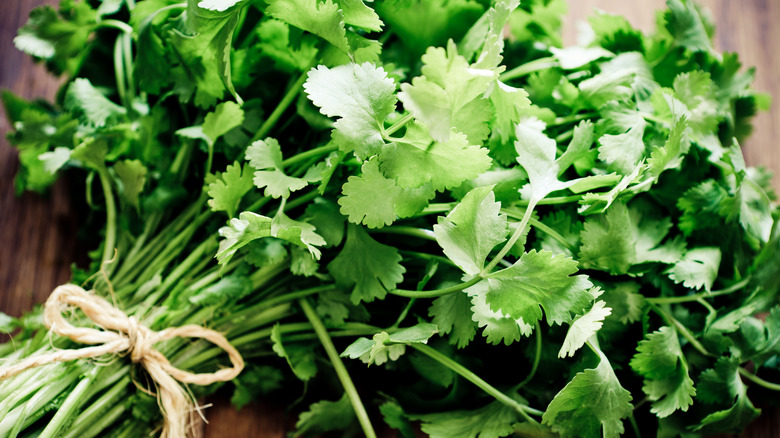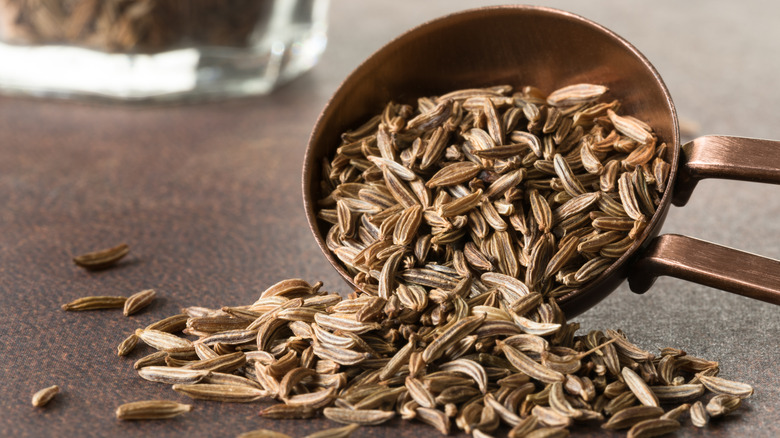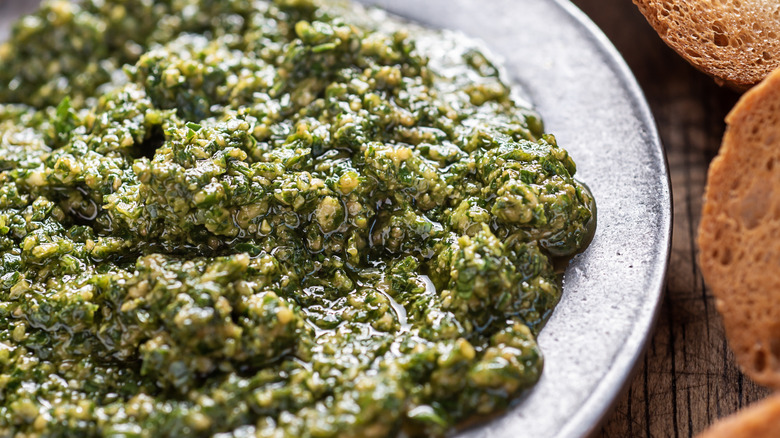The Dry Ingredient That's A Spot-On Substitute For Cilantro
There's hardly a food as controversial as the humble cilantro — an annual herb that comes from the green leaves and stems of the Coriandrum sativum plant. Put simply: You either love it, or you don't. To some, it features a tasty flavor profile similar to a mashup of parsley and citrus, which can lend a kick to a variety of dishes like salsa or a basic guacamole recipe. However, others describe cilantro, which is globally known as coriander, as tasting more akin to soap. Interestingly enough, this may boil down to genetics. Fortunately — for those who can't stand the stuff or are simply out of the herb — there's an underrated spice that's a dead ringer for cilantro: caraway.
Best of all, this cilantro substitute tastes nothing like soap suds. Instead, it features a bittersweet, nutty flavor reminiscent of licorice with subtle notes of citrus and pepper. And, since both cilantro and caraway stem from the same parsley plant family, Apiaceae, the latter is the perfect substitute for any recipe that calls for dried cilantro as well as ground coriander seeds.
Add depth to any dish with caraway
Caraway is mistakenly referred to as a seed; however, it's actually the brown, dried fruit of the caraway plant, which is scientifically known as Carum carvi L. And, although it may look like cumin seeds, its subtle hints of lemon and pepper make it a good alternative to cilantro. Use it whole or ground to add dimension to a variety of savory dishes like curries or stews. Or, add a touch of warm flavor to sweet treats, such as creamy rice pudding, biscuits, or scones. You can even incorporate it into homemade bread recipes, such as rye or soda loaf.
Although the amount you'll need to use will vary from one recipe to the next, a good rule of thumb is to use a 1:1 ratio. For instance, if a recipe calls for two teaspoons of dried cilantro, you'd substitute it with two teaspoons of caraway. It's important to note that caraway tends to have a slightly stronger flavor, so it may be a good idea to start with a smaller amount — in this example, say, one teaspoon — and add in more to taste from there.
Other alternatives to cilantro
Caraway isn't the only stand-in for dried cilantro. There's a variety of other spices and herbs that can be used in its place too, including cumin and curry powder, which can both lend a rather robust and spiced flavor to a dish. Just keep in mind that the latter features a bit more of a complex profile compared to dried cilantro — meaning use smaller amounts because a little can go a long way.
However, if you're looking for an alternative to fresh cilantro, your best bet is to go with herbs like parsley or basil, which can also help to brighten a dish. Although the former greatly resembles cilantro, it's a bit more bitter and doesn't feature the same lemon undertones, so consider adding a splash of lemon juice too. On the other hand, basil adds a note of sweetness to a dish along with subtle hints of pepper. What's more, you can even use dill, which lends a similar citrusy and grassy flavor to any meal.



